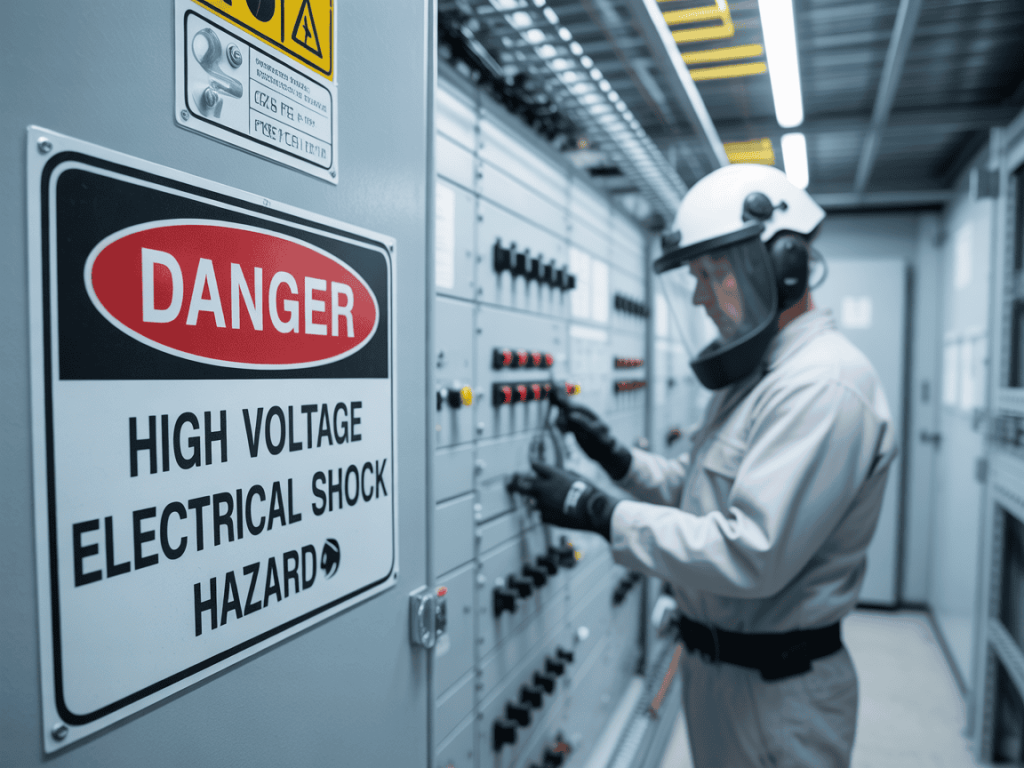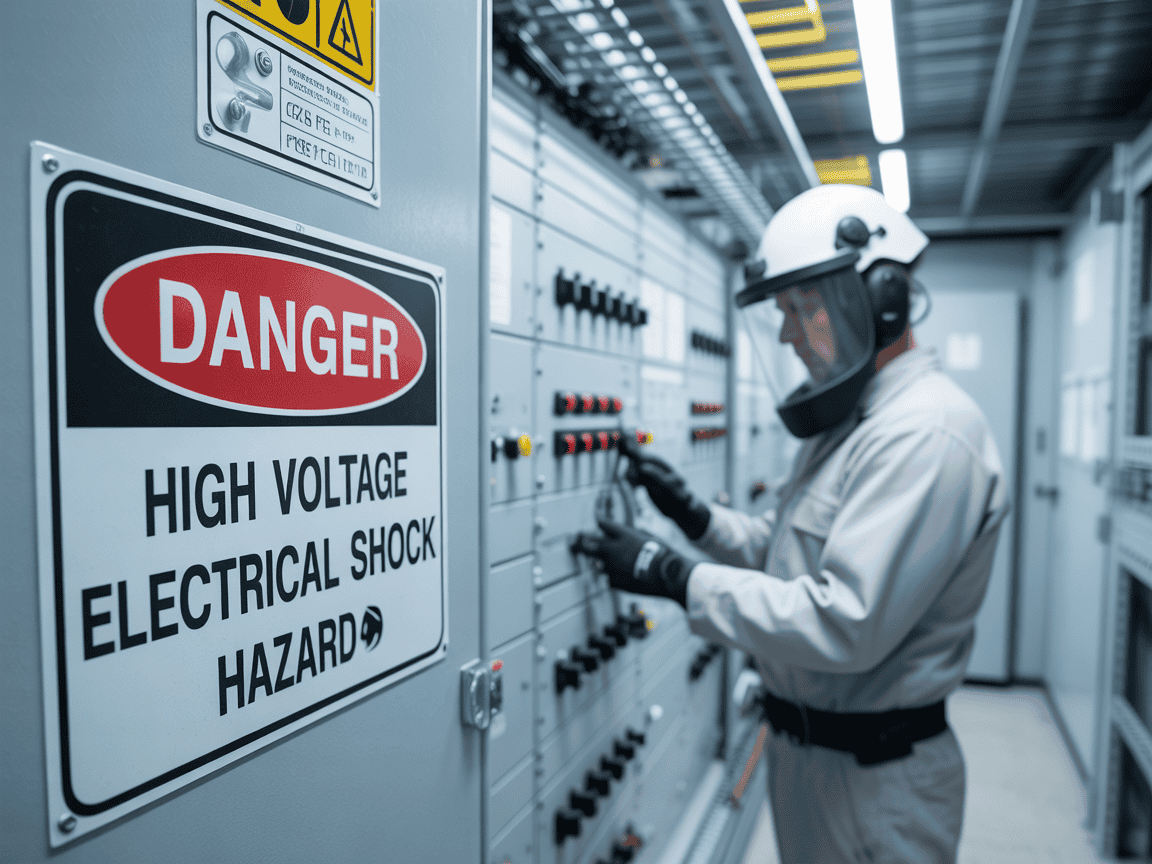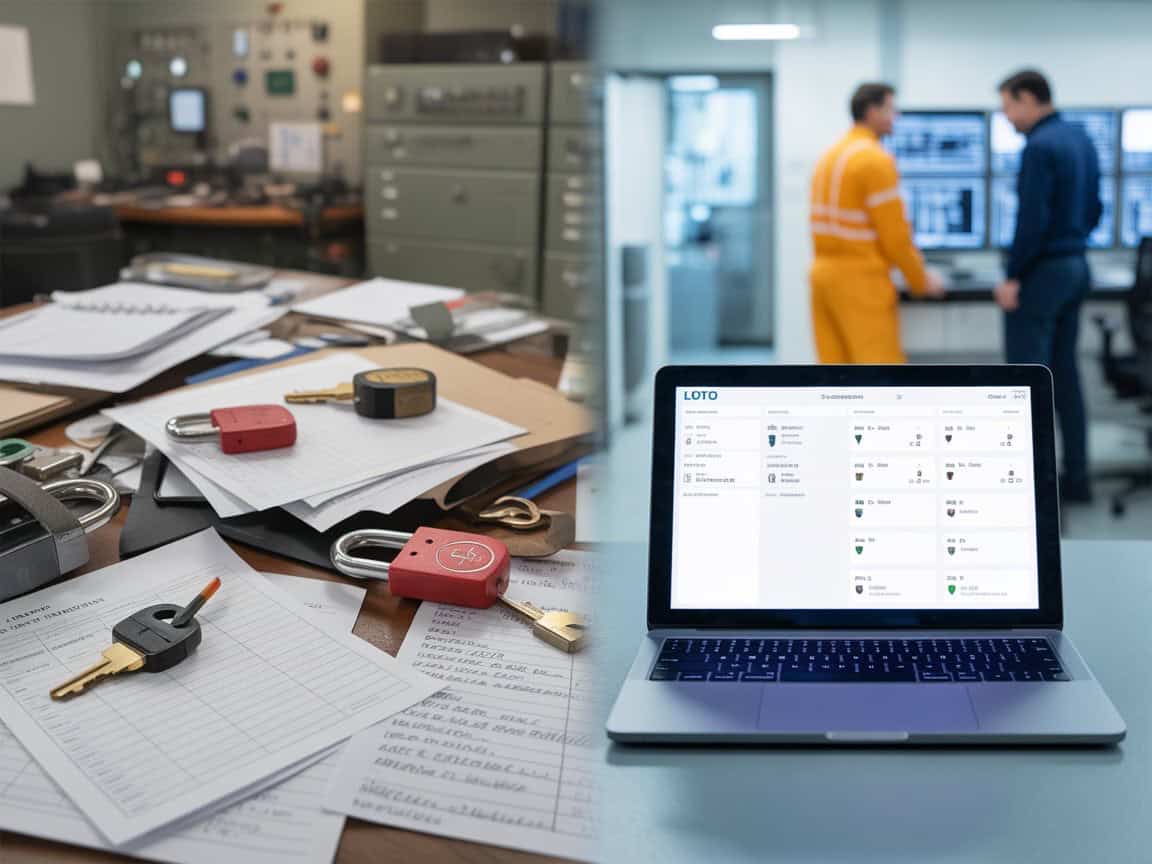
Understanding Electrical Hazards: Causes, Risks, and How to Prevent Them on Industrial Sites
- Blog
⚡ Understanding Electrical Hazards: Causes, Risks, and How to Prevent Them on Industrial Sites
Electrical energy powers every industrial site — but unmanaged, it can also become one of its deadliest threats. Whether in a data center, oil & gas facility, or high-voltage substation, electrical hazards pose serious risks to both personnel and operations. Fortunately, most incidents are preventable with the right knowledge, training, and systems in place.
🔎 What Are Electrical Hazards?
Electrical hazards refer to any situation where electric current can cause harm — through shock, burns, arc flash, or equipment failure. These dangers aren’t limited to direct contact with live wires; they also include indirect risks like exposed conductive parts or residual energy stored in equipment.
In high-risk environments, even low-voltage systems can pose significant threats under certain conditions, especially if safety protocols aren’t rigorously followed.
⚠️ Common Causes of Electrical Accidents
Many electrical incidents stem from preventable issues:
- Poor insulation or faulty equipment
- Inadequate or absent energy isolation (LOTO) procedures
- Improper tool use or dropped objects
- Working on or near energized circuits without proper PPE
- Assuming a system is de-energized without verification
In industries like oil & gas and mission-critical facilities, such oversights can quickly escalate into life-threatening events — including arc flashes with temperatures exceeding 20,000°C, capable of causing severe burns and system-wide blackouts.
🧍♂️ The Human Impact — And the Organizational Cost
Electrical injuries range from minor shocks to permanent disability or fatality. Arc flash incidents, in particular, can lead to:
- Burns, nerve damage, or loss of limb
- Eye trauma or blindness from ultraviolet flash
- Hearing damage from pressure waves
- Lung injuries from inhaling toxic arc gases
Beyond human consequences, electrical incidents often result in:
- Equipment loss or prolonged downtime
- Disrupted operations and missed deadlines
- Regulatory penalties and reputational damage
✅ 4 Ways to Reduce Electrical Risk on Site
- Regular Equipment Inspections
Early detection of wear, corrosion, or poor connections is key to prevention.
- Proper Use of PPE and Barriers
Employees should never be exposed to live components without appropriate protection and training.
- Clear Work Permits and Procedures
Workflows must define when and how energy isolation is required — and who is authorized.
- Effective Lockout/Tagout (LOTO)
Perhaps the most critical tool in preventing unexpected energization during maintenance or handover.
🔐 LOTO: The Frontline of Electrical Safety
Lockout/Tagout (LOTO) is the standard for isolating energy sources before any work begins. But on real job sites, this system is often hindered by:
- Paper-based procedures that are prone to error
- Unclear responsibilities between trades
- Lack of real-time visibility on active isolations
- Audit gaps during inspections
That’s why industry leaders are turning to digital LOTO systems — to track, verify, and enforce energy isolation workflows with full accountability and speed.
🌐 The Safer Way Forward
Modern LOTO systems like LOTOControl are designed for complex industrial operations, offering:
- Real-time dashboards for isolation status
- Digital approvals and user traceability
- Structured procedures aligned with your organization’s safety protocols
By digitizing Lockout/Tagout, teams reduce human error, accelerate compliance, and enhance safety culture — without compromising performance or flexibility.
🧭 Final Thoughts
Electrical hazards may always be present — but preventable accidents shouldn’t be.
If your team relies on paper LOTO forms or fragmented workflows, now is the time to explore a smarter alternative.
👉 Discover how LOTOControl brings simplicity, traceability, and control to the heart of energy isolation.
[Request a demo]

Related Posts





